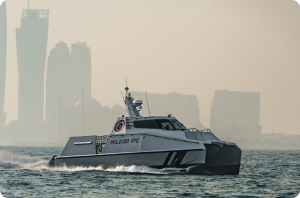5 Must-Have Features For Marine Communication Systems

Marine communication systems are essential for safe and efficient maritime operations, allowing vessels to communicate with shore-based facilities, other ships, and maritime authorities. When selecting marine communication systems in UAE, certain features are critical to ensure reliability, performance, and compliance with regulatory requirements.
Global coverage:
Marine communication systems must provide global coverage to ensure connectivity regardless of location. Whether steering coastal waters or crossing oceans, vessels require reliable communication capabilities that extend beyond national boundaries. Systems such as the Global Maritime Distress and Safety System (GMDSS) offer satellite-based communication coverage, allowing vessels to communicate and request assistance anywhere in the domain.
Distress alerting and emergency communication:
Distress alerting and emergency communication capabilities are essential for ensuring the safety and security of maritime operations. Marine communication systems should include features such as digital selective calling (DSC), which allows vessels to transmit distress alerts and communicate distress messages to nearby ships and rescue coordination centers. Additionally, integration with emergency position-indicating radio beacons (EPIRBs) and personal locator beacons (PLBs) improves the effectiveness of distress alerting and emergency response.
Interoperability and compatibility:
Marine communication systems must be interoperable and compatible with other communication equipment and protocols to facilitate smooth communication between vessels, shore-based facilities, and maritime authorities. Compatibility with standard radio frequencies, communication protocols (e.g., VHF, MF/HF, satellite), and equipment interfaces ensures interoperability and improves communication capabilities across diverse maritime environments.
Redundancy and backup systems:
Redundancy and backup systems are critical for ensuring continuity of communication in the event of equipment failure or power loss. Marine communication systems should incorporate redundant components, such as backup radios, antennas, and power supplies, to mitigate the risk of communication failures during critical operations. Additionally, backup power sources, such as batteries and emergency generators, provide assurance that communication systems remain operational during power outages or emergencies.
Integration with navigation and safety systems:
Integration with navigation and safety systems improves the functionality and effectiveness of marine communication systems. Features such as automatic identification system (AIS) integration allow vessels to exchange real-time navigation and safety information, including vessel positions, course, speed, and status. Integration with radar, electronic chart display and information systems (ECDIS), and collision avoidance systems improves situational awareness and promotes safe navigation.




